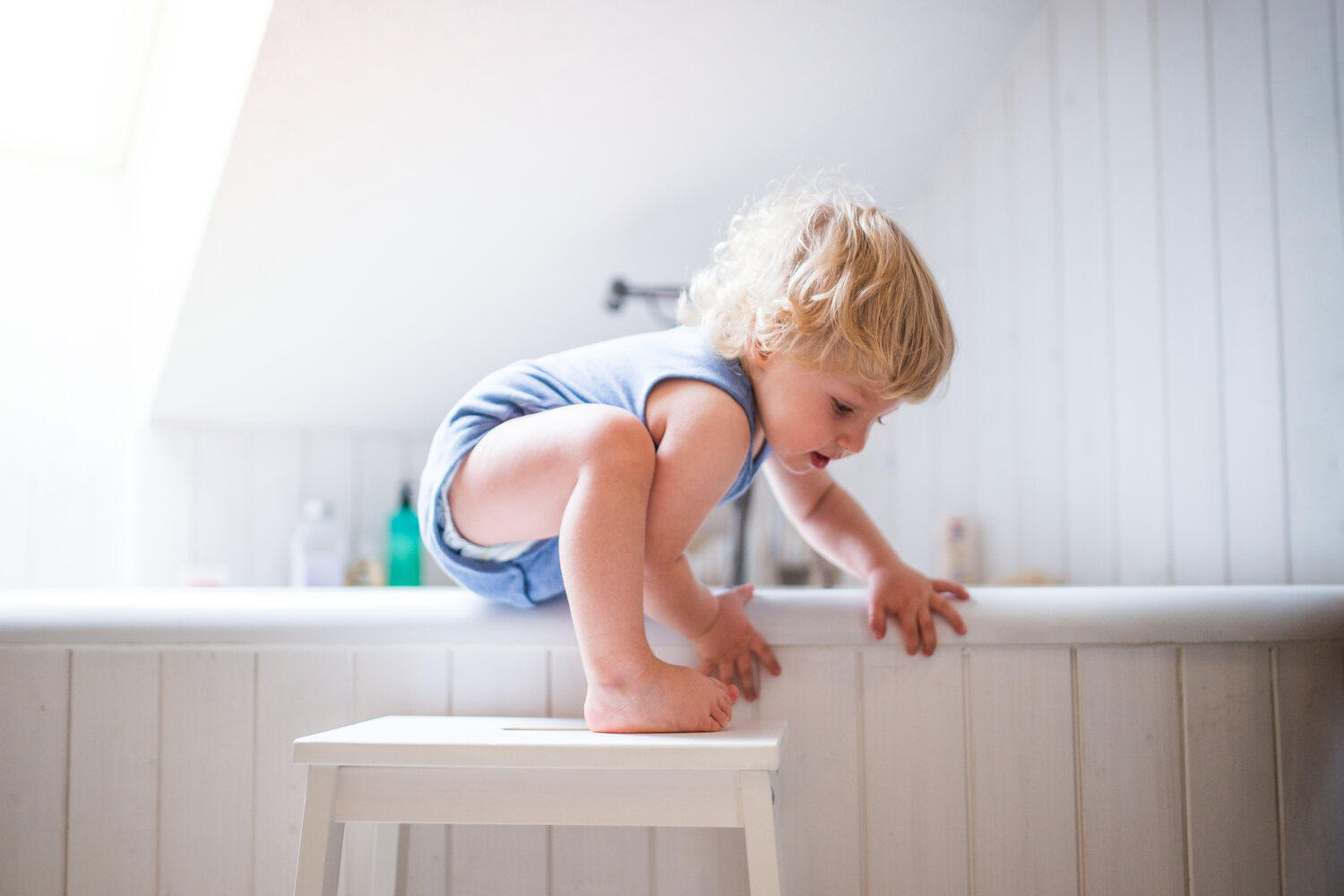
To see your little one walk around the house is a wonderful sight. But your toddler is now more prone to falling and bumping into things. Toddlers can get a bit handful at times so you should keep your kid’s surroundings a little more toddler-friendly. In this aspect, knowing bathroom safety tips for toddlers is important.
Among the precautions you need to take when your toddler starts walking is to baby-proof your house, especially the bathroom. A bathroom is a place that your toddler is going to spend a good amount of time in regularly. So here are the top 15 bathroom safety tips for toddlers that you need to be aware of.
In This Article
Top 15 Bathroom Safety Tips For Toddlers
Listed below are some pointers that will help you to prep your bathroom for your toddler-
1. Redo The Hardware
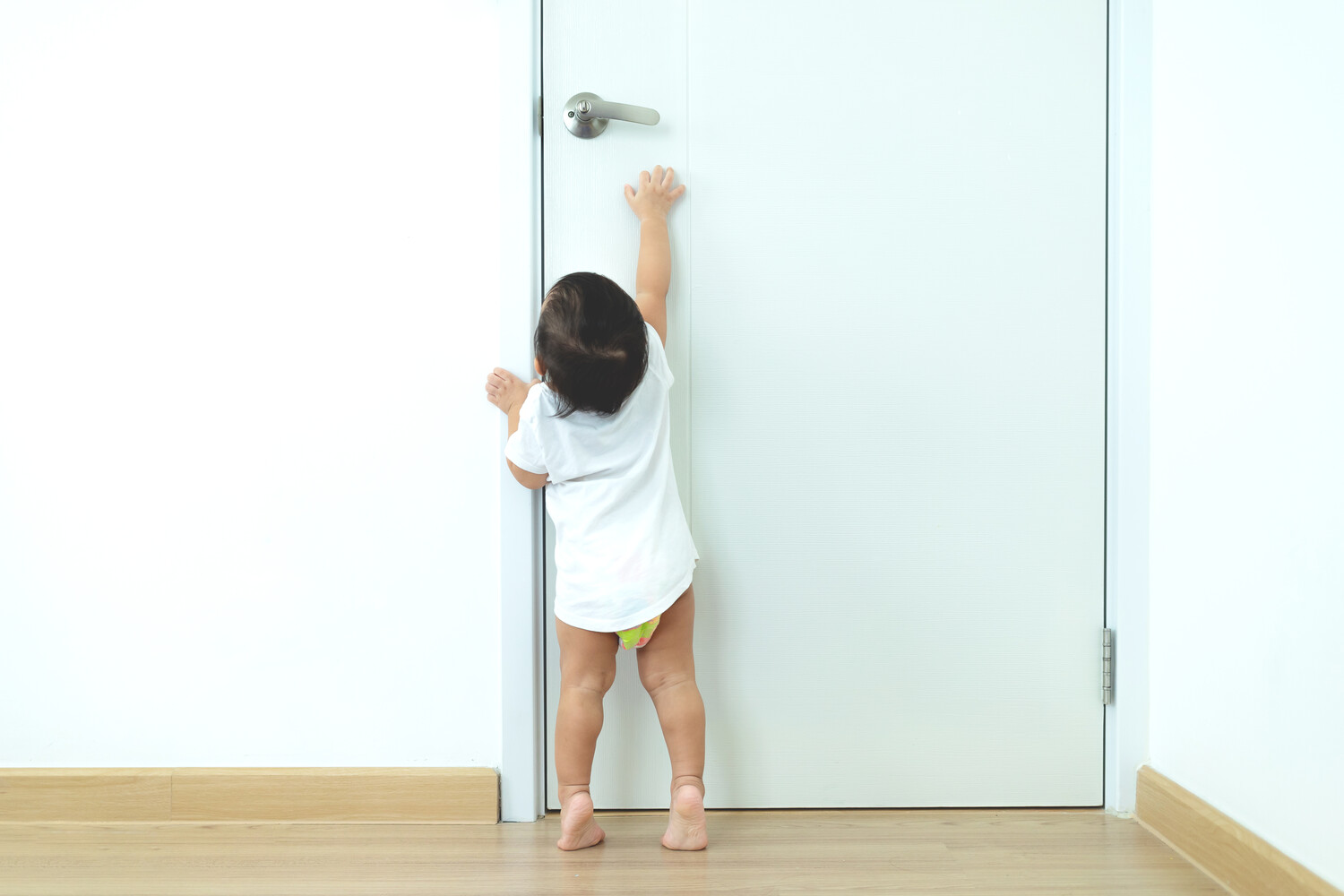
Bathrooms and toilets are particularly dangerous zones for your toddlers. Make sure your bathroom door has a sturdy latch that your toddler can’t open. Fix the latch at a height your toddler is unable to reach.
Also, make certain that the taps and faucets are at a good height. Taps and faucets are made of metal and can give your toddler serious injury.
2. Padding And Baby-proofing
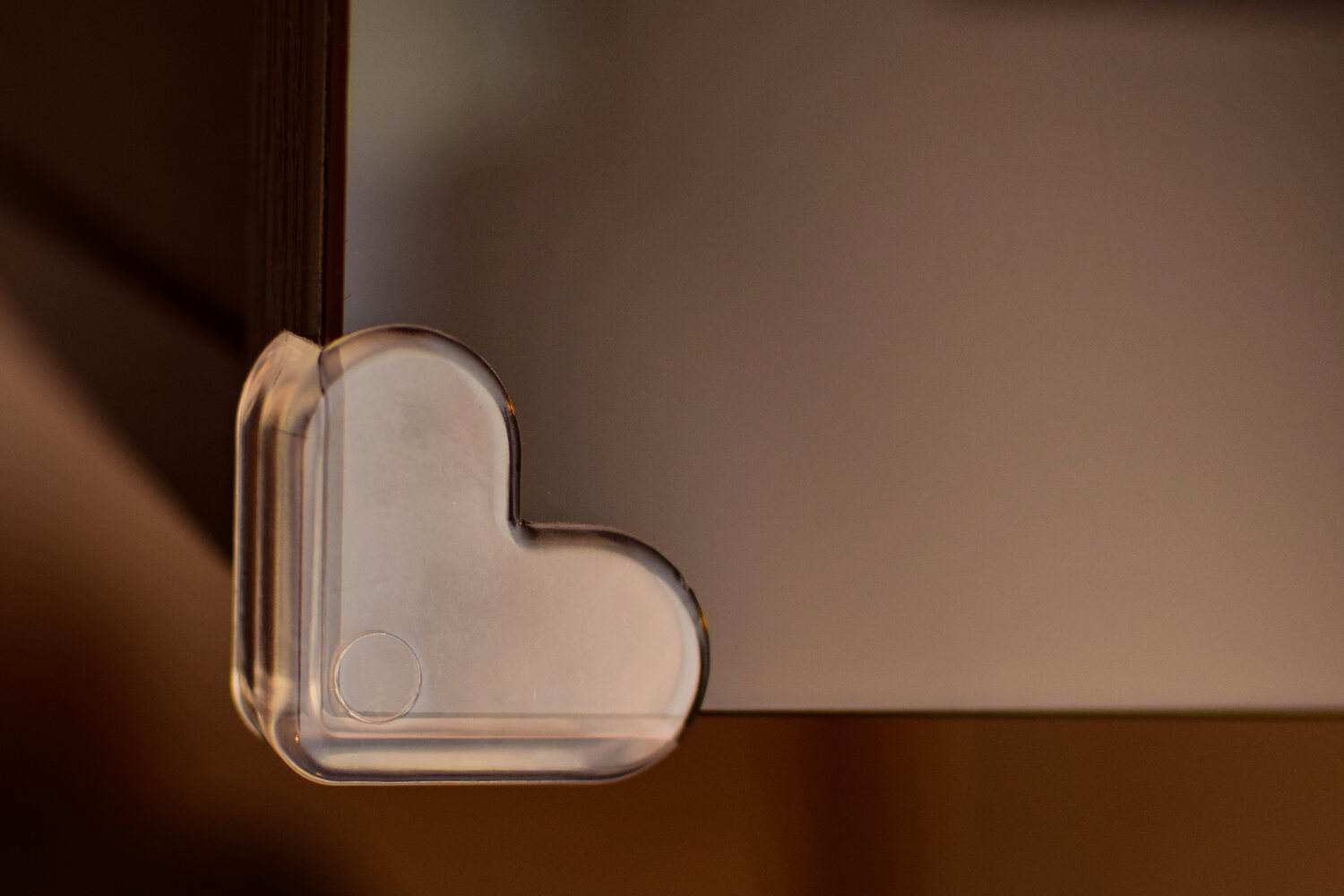
To avoid accidents, make sure you cover the sharp edges in your bathroom. There is a lot of padding and baby-proofing material available in the market to cover and conceal the rough and sharp edges in the bathroom.
You could even stick a thin layer of sponge to objects that are sharp and could hurt the toddler. Painting rough edges to smooth them out will also help to keep your kid safe.
3. Keep Gadgets/Electronics Out of Reach
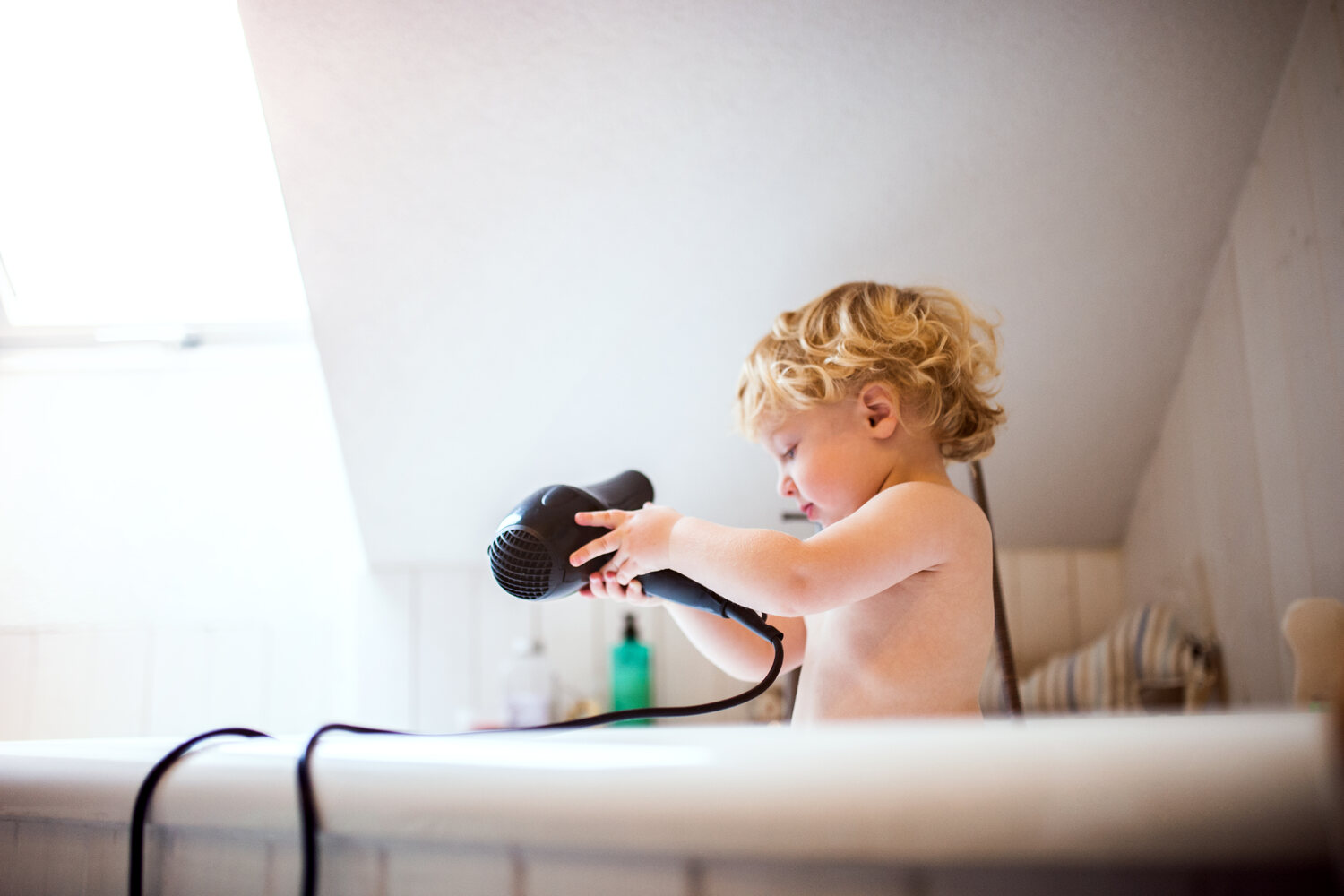
Unintentional injury at home leads to 40% of child deaths (1). Electronic items like razors and dryers can be extremely hazardous especially with a toddler in the house. Make sure that all your electronic gadgets are unplugged and way beyond your toddler’s reach.
If you store them in the bathroom, have a separate cabinet for these things, which is difficult for your kid to open. Also, make a habit to put these things away immediately after use.
4. Keep Chemicals And Detergents Away
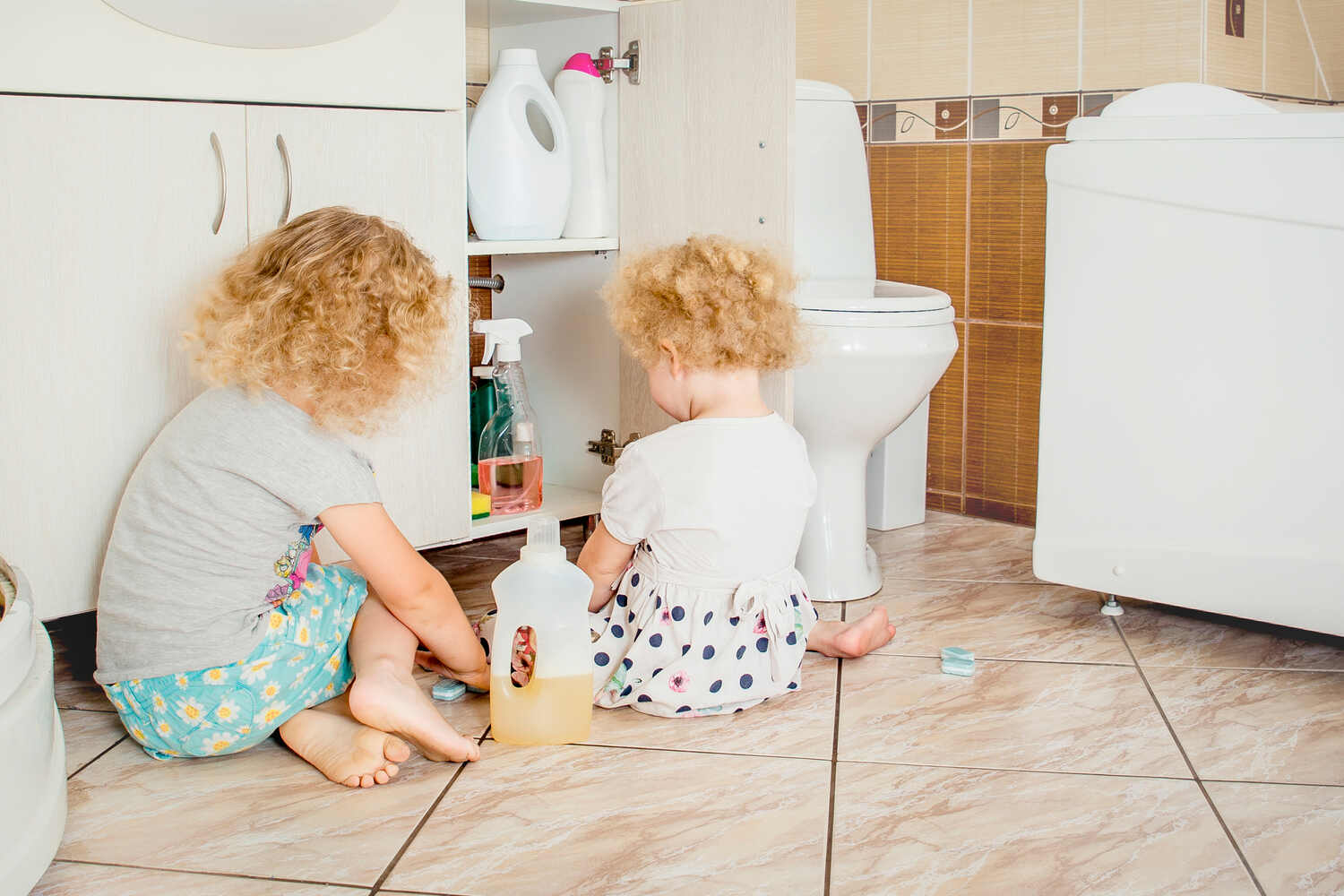
Detergents and cleaning agents must be kept on a higher shelf in the bathroom. If the toddler accidentally touches, licks, or swallows cleaning agents or other toiletries, it can be extremely dangerous (2). Also, make sure you securely close the lid of these products and do not leave them open.
5. Safety Accessories to Baby-proof Bathroom
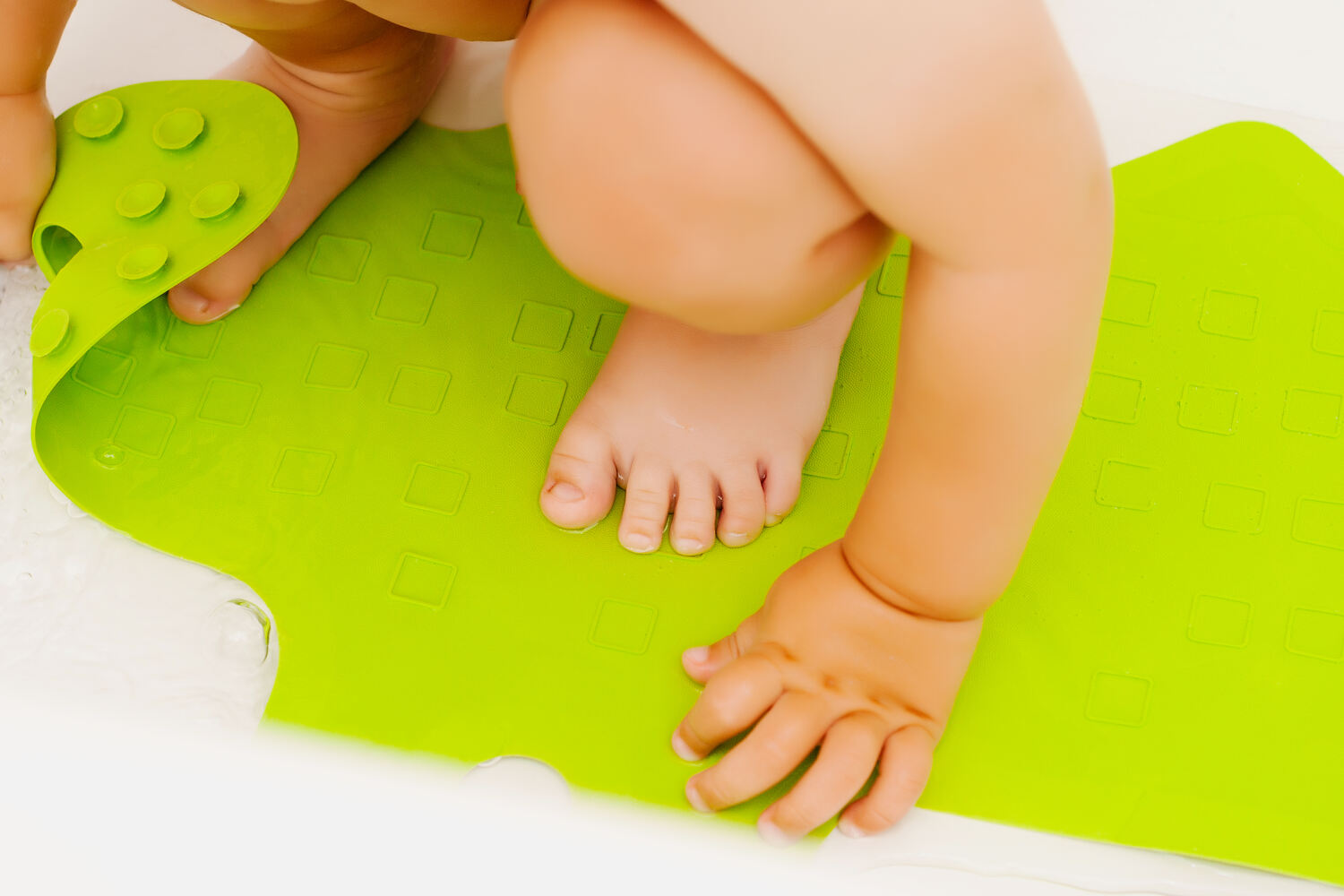
To make things easier for new parents, there are a lot of products available in the market to help with baby-proofing, such as-
- Faucet extenders help the toddler reach the running water easily
- Adhesive stickers, when stuck on the bathroom floor, give a good grip to the feet and avoid slipping accidents
- Portable handles can be stuck on the bathroom walls so that the toddler or the mother can hold on to them while getting off the floor
- Non-slip mats provide a good grip even when there is water on the floor
- A toilet seat lock is a child lock system that is put on the toilet seat so that a toddler cannot open it
- If you have a bathtub, investing in some baby floats, rings, and floating cushions is a wise decision
6. Check The Water Temperature
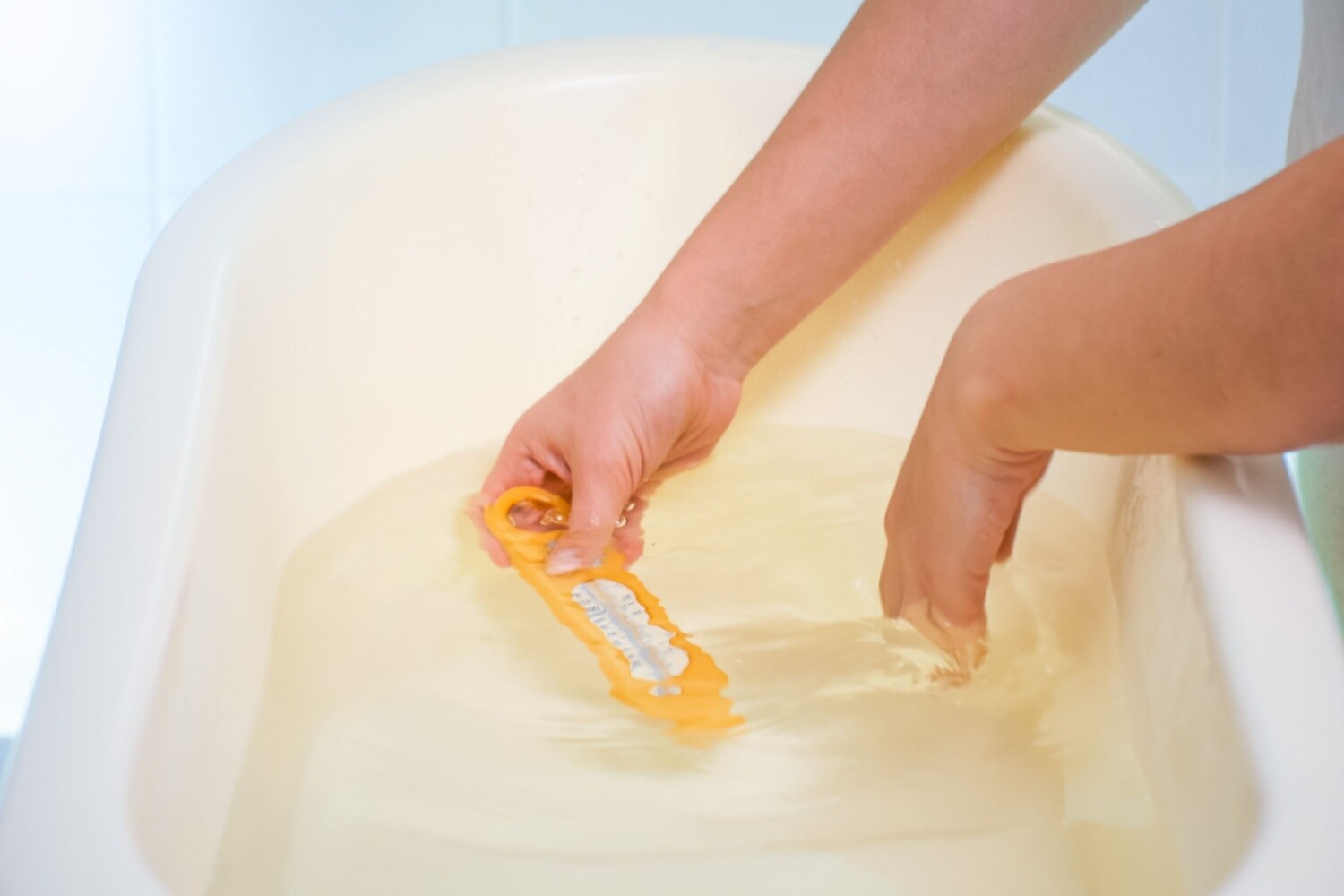
Your toddler has extra sensitive skin, hence you need to be careful about the water temperature before bathing them. The bathing water must not be more than 100 degrees Fahrenheit (48 degree Celsius) (3). A water thermometer can help you check the water temperature to determine whether the water in the tub is suitable for your little one.
You can also test the water at the back of your hand before pouring it. Very hot water could burn the toddler’s skin. Also, do not use extremely cold water while bathing your toddler as it can give them a cough and cold. Lukewarm water is the most appropriate.
7. Use Good Quality And Gentle Products
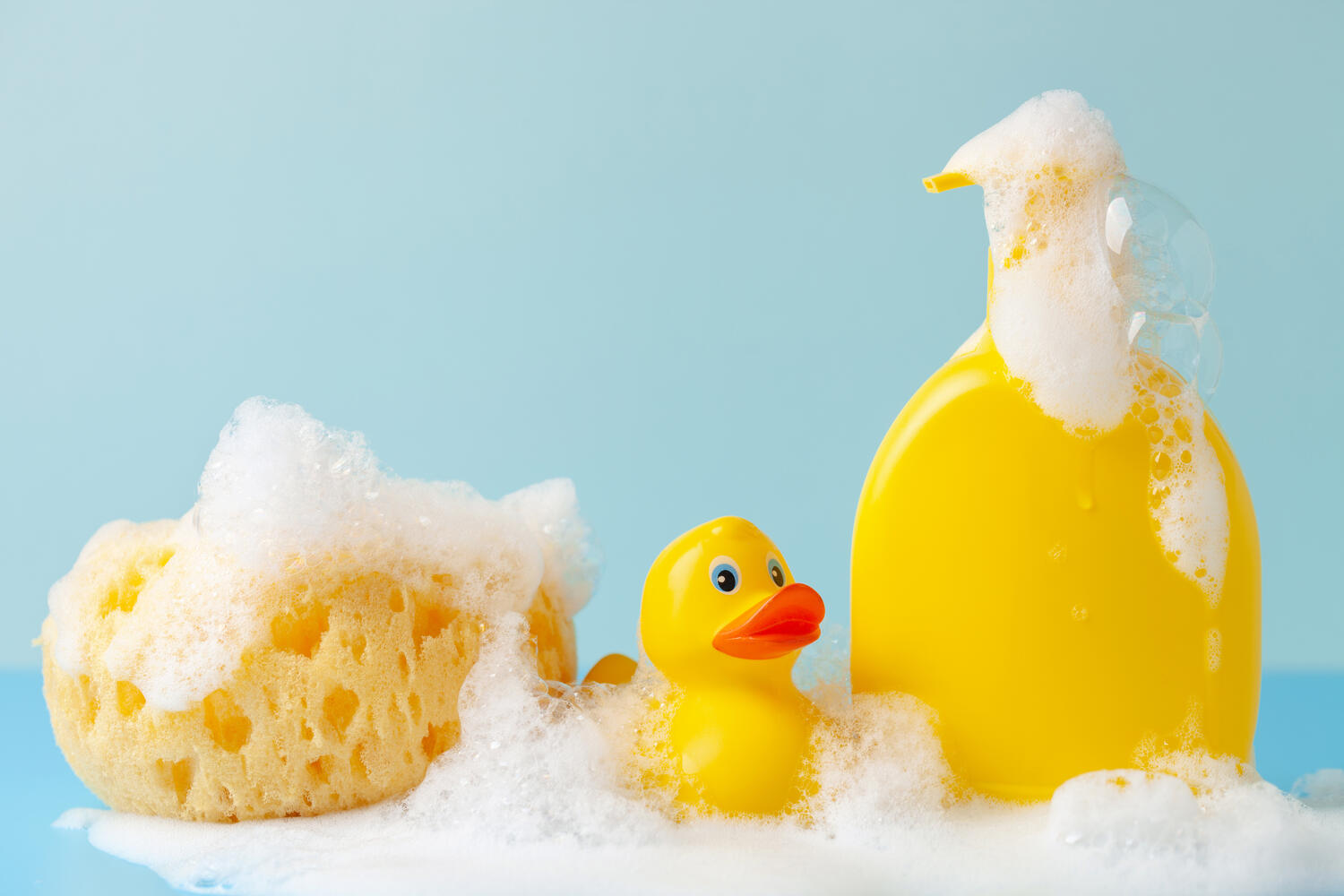
Make sure to use extremely gentle and chemical-free products for your toddler. These include shampoos, soaps, powder, lotions, and creams as well. Opt for chemical and paraben-free products that won’t harm your kid. You can also opt for homemade soaps and natural organic products.
8. Things to Avoid
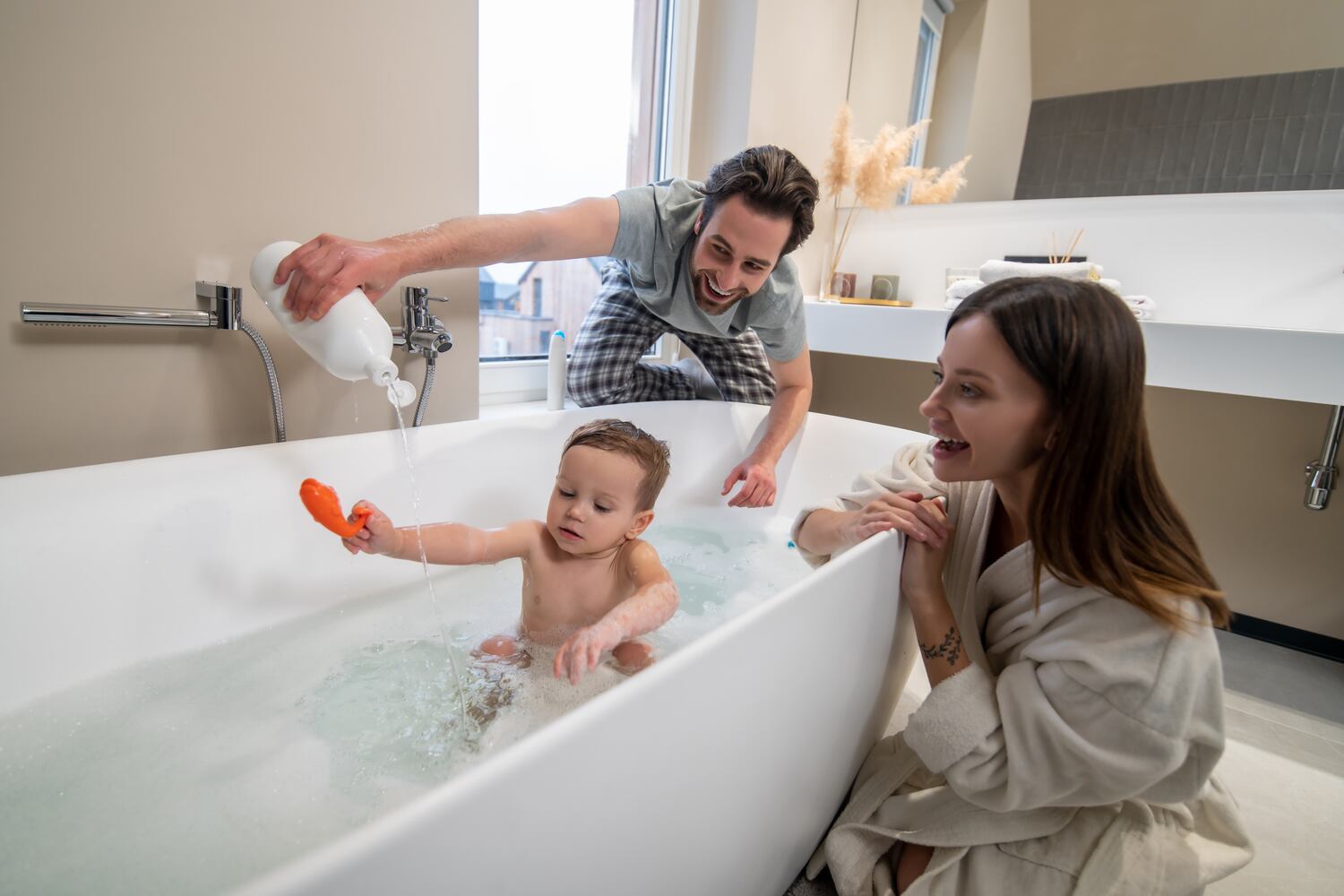
Bathing your toddler in adult size bathtubs should be avoided as they cause many accidents since they store water and have a slippery surface (4). Also soaking in soapy water for a long duration can give your toddler an infection.
Take off the shower curtain if you have one, since kids tend to get entangled in the curtain and it can also cause suffocation. Vinyl shower curtains release chemicals in the air that could harm your little one (5).
9. Things to Teach Your Toddler
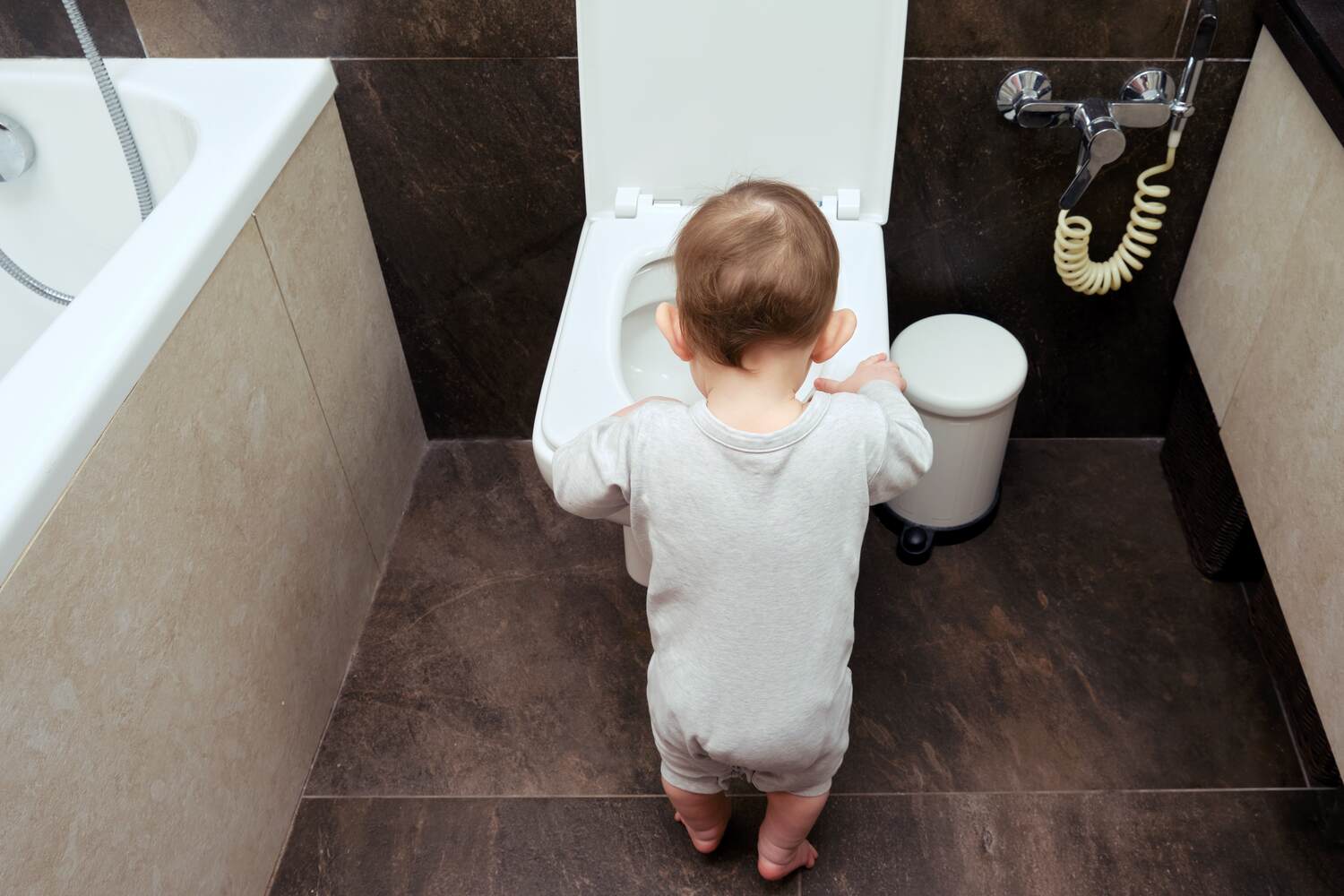
Even after taking several precautions, it is essential that you teach your toddler certain things like running in the bathroom is a strict no-no. Make them understand that touching the toilet seat and shoving their hands in the pot is a very bad habit as there are a lot of germs.
Restrict your toddler from touching the gadgets even if they are unplugged. Also, teach them how to turn off the faucet in case the water is overflowing and spills on the floor. Also teach your toddler to stay seated during the entire process, be it bathing or potty training.
10. Give Your Toddler Full Attention
When you are in the bathroom with your toddler you have to be extra attentive. With slippery floors, water, and metal faucets in the bathroom, your kid needs your undivided attention. You can make this a toddler-parent bonding time if you wish.
11. Use Rubber Bumpers on Sharp Counter Corners
The countertops in the bathroom usually have sharp corners. This is very dangerous for your toddler who runs around and falls every 5 minutes. Installing rubber bumpers on the sharp counter corner prevents the toddler from hitting and injuring their head on these sharp corners.
12. Install Anti-scalding Devices on Taps
Install an anti-scalding device on the taps. This device automatically turns off the water if the temperature rises too high. You may discover a variety of anti-scalding gadgets in the market, which reduce the possibility of scalding.
13. Install Locks on Trash Bins
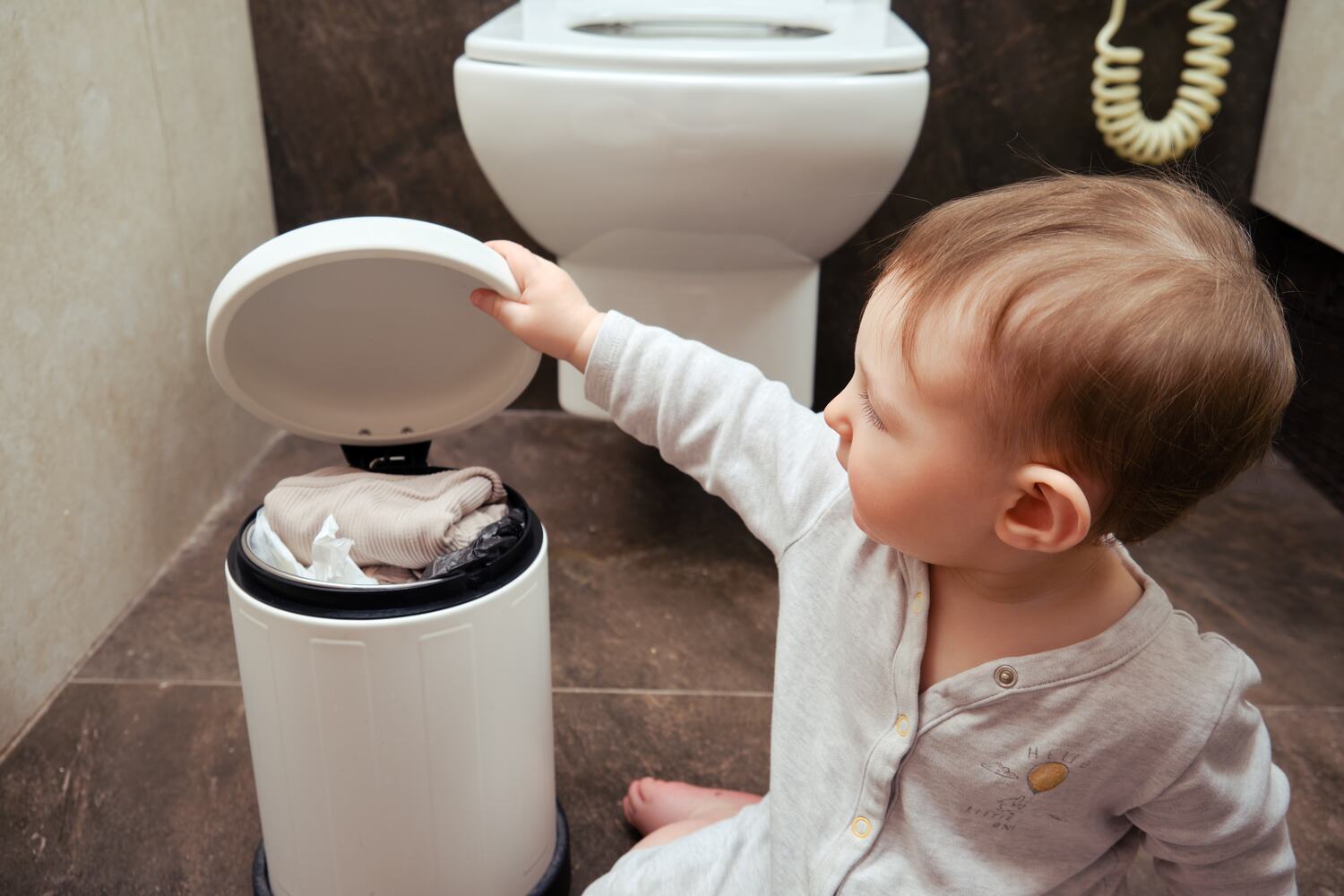
If you already have a trash bin in your bathroom, install trash can locks. Alternatively, if you want to buy one, look for trash cans that have a pre-installed lock. Toddlers tend to look into garbage cans. Not only is it unhygienic for them, they may also hurt themselves.
14. Remove The Shaving Mirror From The Shower
If you have an in-shower shaving mirror, take it away or place it out of the reach of a toddler while they are in the tub. The mirror can accidentally shatter and the sharp blades might injure them.
15. Purchase Rubber Guards For Tub Spouts
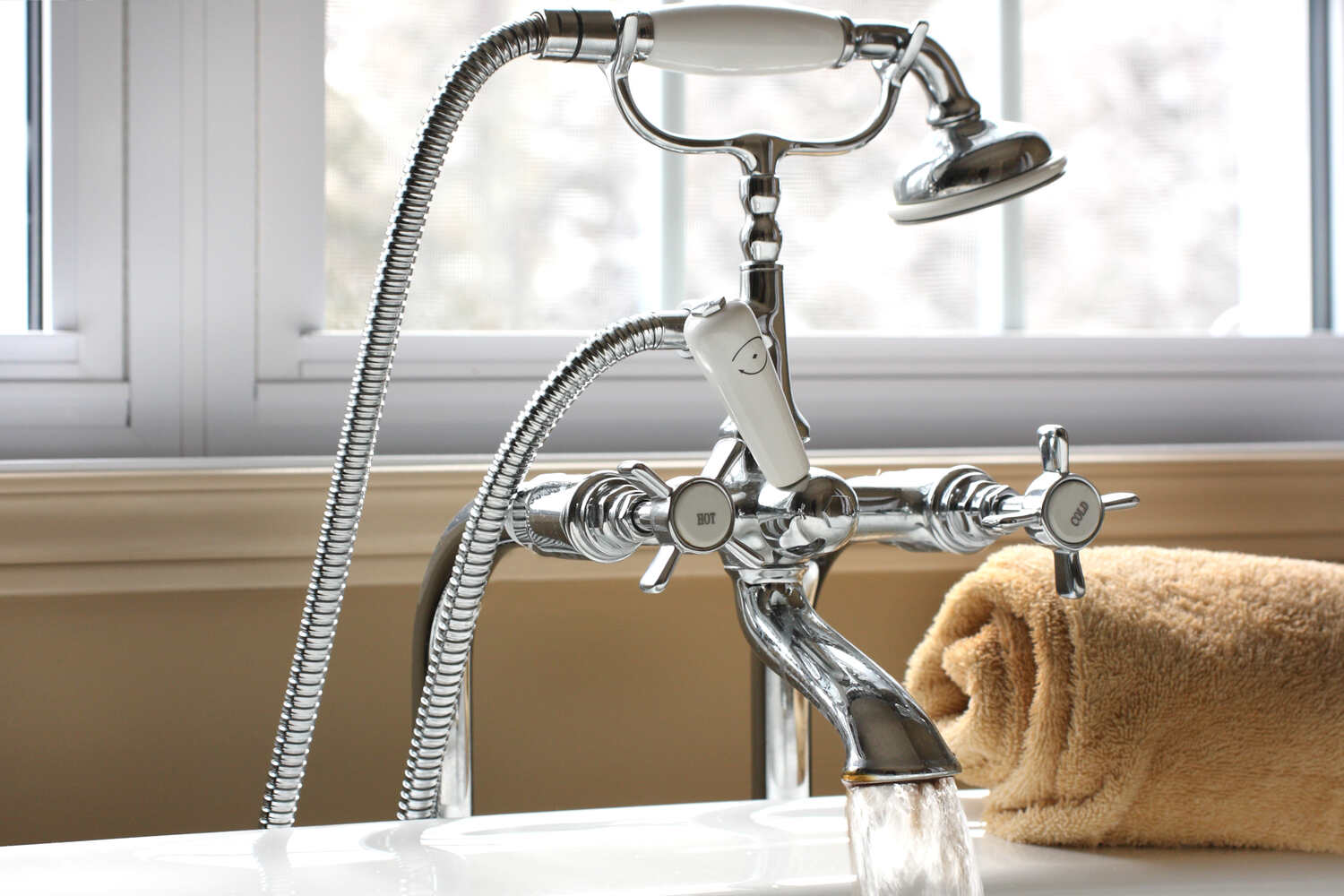
The spout is usually harmless, but anyone who bathes a kid knows that they get very excited when playing in the bathtub. A rubber spout cover helps to prevent the toddler from accidentally hitting the spout and injuring their head.
There are many ways for your toddler to use the bathroom more safely, including dealing with the risk of burns, slips, cuts, and electric shock. Try these bathroom safety tips for toddlers listed above, and ensure their safety in the bathroom.
FAQ’s
1. What Are The Hazards in The Bathroom For Toddlers?
There can be various possible hazards in the bathroom for toddlers. Injuries related to accidental slips, drowning, chemical poisoning, and burning from hot water can be some of the prominent bathroom hazards for toddlers.
2. How do I Keep my Toddler Safe in The Bath?
The only way to keep your toddler safe in the bath is by not leaving them alone there. Keep all the necessary items like towel, cleanser, bathing robe ready in advance so that you don’t have to leave the toddler alone in the bath searching for them. Keep the tap of hot water tightly closed and don’t raise the bathtub water above the belly button level of your toddler when they sit.
References
- Knowledge and attitude of children safety at home among population in Saudi Arabia – [https://www.ncbi.nlm.nih.gov/pmc/articles/PMC9051739/]
- Unintentional pediatric exposures to household cleaning products: a cross-sectional analysis of the National Poison Data System (2000–2015) – [https://www.ncbi.nlm.nih.gov/pmc/articles/PMC10422824/]
- Tips for Parents – [https://www.in.gov/dcs/files/ParentCLRH005-85x11Parent.pdf]
- Injuries associated with bathtubs and showers among children in the United States – [https://pubmed.ncbi.nlm.nih.gov/19596735/]
- Phthalates – [https://www.p65warnings.ca.gov/fact-sheets/phthalates]
